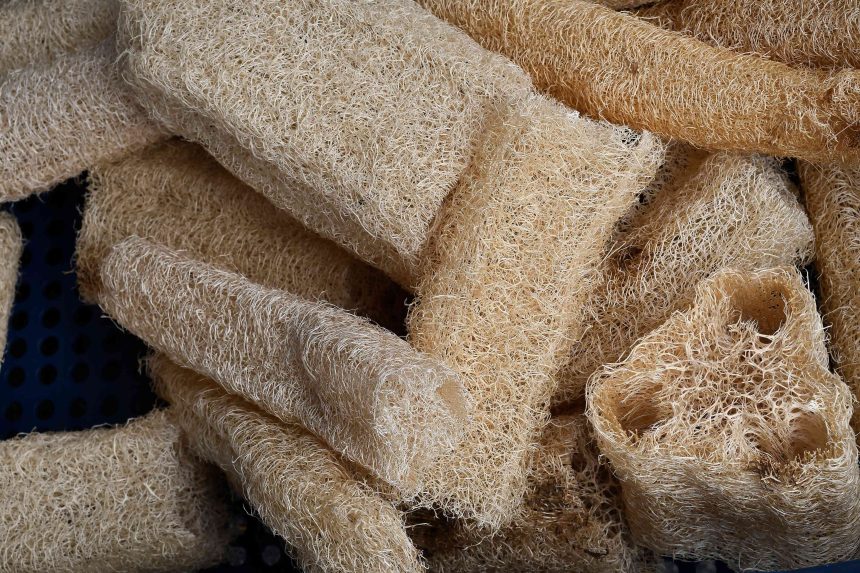Did you know your bathroom loofah might have grown from a plant? Unlike large plastic loofahs, natural luffas aren’t manmade at all—they’re actually made from dried gourds. That’s also how loofahs got their name; the luffa plant’s insides are called a loofah, though you might hear both names used interchangeably.
You may have seen a few of your favorite sustainability influencers (or just those with plentiful gardens) enjoying homegrown loofah sponges. Luffa plants produce an abundance of squashes in a growing season, so anyone who has been following the trend of growing them yourself at home knows you get enough sponges to last you the year.
Making Loofahs Out of Your Luffa Plants
If you’re planning on growing some luffa plants yourself, you may be pleasantly surprised that the fruits are easy to turn into sponges. Once the squash fruits are fully ripened and somewhat dried to a yellow or brown color, you can harvest them. Remove the seeds by shaking them out of the top or bottom of the squash. (Don’t forget to dry the seeds and save them for next year’s growing season!)
You can then peel the skin off of the luffa squash before hanging it up to dry or leaving it out in the sunlight. Once your luffa has fully dried, you have a few different options for using your sponge—and this affects your next steps.
How to Use Your Home-Grown Sponges
If you’re using yours in the kitchen, cut open your dried luffa with a single vertical cut. You can then flatten it out and remove the hollowed ridges from the inside of the squash to create a flat surface. Then, cut the luffa into rectangular sponges.
Kitchen Cleaning
These sponges work for cleaning dishes, kitchen countertops, tile, and backsplashes. They’re gentle, sustainable, and don’t scratch. Luffa sponges are even dishwasher-safe, so you can easily sanitize them by dropping them in the top rack.
You can also sew multiple flat luffa pieces together to create a thicker sponge. This may also help them stay together better or lie flatter.
Bathroom Cleaning
If you’re planning on using your sponge for cleaning your bath or shower, you have a few different paths to take: You can choose to stick with the flat sponge surface for scrubbing, or you can leave the luffa’s natural shape alone when you cut it.
Personal Hygiene
Luffas naturally have ridges that create hollows on their insides. When they’re used for self-care, you’ll often find that the hollows are left alone—this keeps the luffa’s natural circular shape, and they’ll still be flexible. For exfoliating the skin or using as a washcloth, you don’t need to do anything more than slice your luffa horizontally into your desired thickness.
Gifting
If you have any upcoming birthdays, housewarmings, or any other events filling up the calendar, make soaps with your luffas for a thoughtful homemade gift. And it only requires two steps: Cut your luffa into sections and melt soap into a circular mold; place the luffa inside, submerging it in the soap with a small section sticking out of the front. That’s it! You’re left with an exfoliating soap that leaves the user with a functional loofah sponge after the soap is gone.
How Long Do They Last?
Once you’ve started using them, you can keep them for one or two months before changing them out. Loofah sponges are an eco-friendly sponge alternative because they’re completely natural and sustainable. To get rid of yours, simply throw it in the compost.
If you don’t have the means to grow luffas in your back yard, don’t let that stop you. You can find the squash available to purchase in grocery stores and dry it yourself for a bit of a shortcut.







